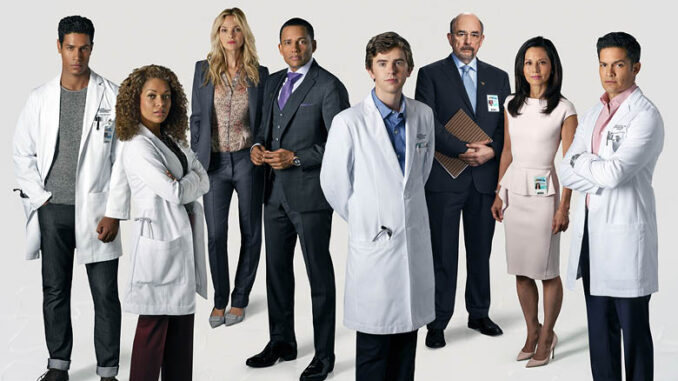
One of the most talked-about comparisons is between the 1988 film Rain Man and the popular TV series The Good Doctor.
Rain Man, directed by Barry Levinson, is a classic. It follows the story of Raymond Babbitt (played by Dustin Hoffman), a man with autism and savant syndrome, and his estranged brother Charlie (Tom Cruise) who discovers him after their father’s death. The film revolves around their road trip together, showcasing Raymond’s incredible mathematical abilities and Charlie’s emotional transformation as he learns to understand and love his brother. Rain Man garnered widespread acclaim, winning multiple Academy Awards, including Best Picture and Best Actor for Hoffman.
In contrast, The Good Doctor arrives in an era of increased awareness and understanding of autism. The character of Shaun Murphy is not just defined by his condition or his savant abilities. The series delves into the challenges he faces in his career and social life, from communication struggles with colleagues to the prejudice he encounters in the workplace. The Good Doctor portrays autism as a spectrum, showing both the difficulties and strengths that come with the condition in a more nuanced and sensitive way than Rain Man.
Both Raymond and Shaun possess savant syndrome, a rare condition where someone with significant mental disabilities demonstrates abilities far beyond what would be considered normal. In Rain Man, Raymond’s savant skills revolve around numbers, patterns, and memory, such as counting cards at a casino. These abilities are depicted as central to the plot, driving the narrative forward and serving as a source of both tension and fascination.

In The Good Doctor, Shaun’s savant skills are linked to his medical career. He is able to visualize complex anatomical processes, diagnose rare conditions, and perform intricate surgeries. However, while Shaun’s talents are essential to his success as a surgeon, the show emphasizes that his true value lies in his empathy, determination, and ability to think outside the box. Shaun’s brilliance is celebrated, but his character is also given room to make mistakes, to grow, and to show his humanity beyond his savantism.
Another critical aspect to consider is the evolution of how autistic characters are written and received by audiences. In Rain Man, Raymond is portrayed as an almost childlike figure, dependent on his brother for survival in a world he doesn’t fully understand. Charlie’s journey is the emotional core of the film, as he learns to appreciate Raymond not just for his talents, but for his uniqueness as a person. However, the film never delves deeply into Raymond’s own internal life or perspective; he remains somewhat of a mystery to both Charlie and the audience.
Shaun Murphy, on the other hand, is at the center of his own story. His internal struggles, emotions, and aspirations are given as much weight as those of his neurotypical colleagues. Shaun’s relationships, particularly with his mentor Dr. Aaron Glassman (Richard Schiff), and his co-workers, are integral to the plot. This shift in focus—from an outside observer’s journey to the autistic character’s own experience—reflects a broader change in how autistic characters are written today, offering them more depth and agency.
When Rain Man was released, it had a significant impact on the public’s understanding of autism. It was one of the first films to bring the condition into the mainstream conversation, albeit with some inaccuracies and oversimplifications. The film is credited with sparking curiosity and compassion, but it also perpetuated the myth that most people with autism have savant abilities, a misconception that has taken years to dispel.
The Good Doctor, by contrast, benefits from years of increased understanding of autism. The show has received praise for its portrayal of Shaun’s condition, though it has also faced criticism for continuing to focus on the savant stereotype. However, The Good Doctor makes a concerted effort to show that Shaun’s value is not solely tied to his exceptional abilities, but to his growth as a person and a doctor. The show’s portrayal has inspired conversations about inclusivity in the workplace, particularly in demanding fields like medicine.
While The Good Doctor and Rain Man both feature autistic savants as their protagonists, the two are products of very different times and perspectives. Rain Man broke ground by introducing autism to a wide audience, but its portrayal is limited and somewhat dated by today’s standards. The Good Doctor builds on this legacy, offering a more well-rounded and contemporary depiction of life on the autism spectrum, focusing on character development, relationships, and the complexity of the human experience.
